Paro, Bhutan
As you climb higher, past the ancient weeping cypress trees, across the bubbling stream that powers the giant prayer wheels, ascending into the clouds, you realize why this place is so sacred. Getting to Bhutan is a journey unto itself, but to take the trek up to Taktsang Gompa transports you to another world. Maybe all the talk about finding “enlightenment” or “oneself” has some credibility after all. This place would seem to indicate just so. Taktsang Gompa is an incredibly special location. As I climb through the clouds to a mystical Buddhist temple, I can’t help but thinking: This is Bhutan, at its most glorious.
Destination Bhutan
I have always wanted to visit Bhutan. This little Buddhist Kingdom, tucked away in a remote northeast corner of the Himalayas, has always been a bit of a mystery. This is because of the challenges associated with getting here. These days, the only real obstacle is the very expensive daily tariff imposed by the Bhutanese government. Luckily for me, I had an opportunity to explore this country for free with a company called Druk Asia.
As I sat in the Singapore Airport at 5:00 am, waiting for my flight I am full of anticipation. When the flight finally boarded, I was instantly immersed into Bhutanese culture. My fellow passengers were wearing the traditional Gho, a Bhutanese garment that everyone wears, and the airline that flies to Paro is named Druk Airways.

After four hours and a pit stop in Kolkata, we got our first glimpse of the Himalayas. Kanchenjunga, the third tallest mountain in the world, looms high above the clouds. When we descend blow the clouds, green mountains covered in untouched forests emerge.
The plane takes a massive left swerve, flying in between two mountains, before descending towards one of the most dangerous landing strips on earth. Looking out the window, you feel like the plane is nearly touching the mountains.
When you finally land, and you exit the plane you hear it: Silence. Only the chirping of a few crickets, and the mountain breeze can be heard. The first impression you have is how peaceful and serene this nation is.
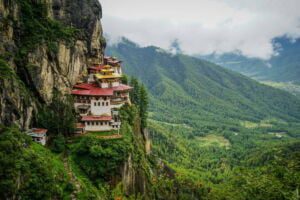
The Paro Valley
Exiting the airport doors, my guide Sonam Wangchuk greeted me. Sonam, who had been a guide for almost 8 years at the time, was to be my new guide/friend with whom I would explore Bhutan for the next two weeks. Leaving the airport, we immediately went to our first destination in the Paro Valley: The Paro Dzong.
Paro Dzong
A Dzong is a Bhutanese fortress or castle that would guard Bhutan’s hidden valleys and trade routes. They are easily noticed when you arrive at any valley. You will also see these powerful structures towering above most of Bhutan’s towns and cities. All the town’s politics, religion and municipal laws are governed from within these buildings. They still govern Bhutan’s provinces, just as they have for centuries.
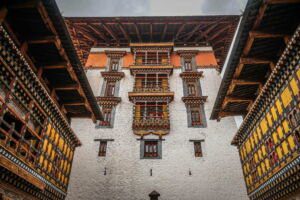
Paro Dzong is a great example of a Dzong, and awesome first sight to see in Bhutan. Red robed monks walk around, chanting, while the locals don their coloured sashes that indicate their status in society, all within giant white and red stone walls. Inside, we saw the temple and a few government offices. For me, the real draw was just watching the people go about their daily lives, here in the castle of Paro.
National Museum
Perched high above the Paro Dzong, in what used to be the watch tower, is the National Museum. Recently, there had been an earthquake that caused damage to the infrastructure of the watch tower. As a result, the Museum artifacts are now being held in a building nearby.
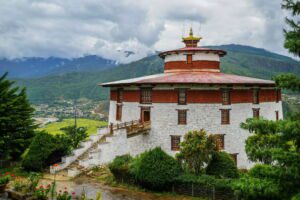
The museum provides a great insight to Bhutanese way of life, culture, and festivals. There is also a section of the museum that shows the diversity of wildlife in Bhutan with a few taxidermy models, including those of the takin, and snow leopard. My personal favourite section was the hall of masks. In this hall, they have all the masks used in Bhutanese Cham Mask Festivals.
Apart from a look at Bhutanese history, the Museum provides fantastic views over the beautiful valley. There is a two-hour hike from here up the mountain, but I opted out as I would be hiking to the Tigers’ Nest the next day.
Kyichu Lhakhang
Just outside of Paro Town is the temple of Kyichu Lhakhang. Kyichu Lhakhang is one of Bhutan’s oldest and most beautiful temples. The temple is believed to have been built to pin down the leg of a giant demon in 659 by King Songtsen Gampo of Tibet.
The Temple is situated near a small community surrounded by yellow barley fields. Often, the roads are being used by more cows than people. The mountains tower over the valley, making it very picturesque.
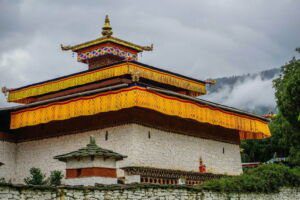
Entering the grounds, the first thing you will notice is the red robed monks, of all ages, walking around, grunting prayers and spinning the giant prayer wheels in the back. The setting is beautiful and incredibly peaceful.
During ceremonies, you will hear the deep bass from the drums, the grunts of chanting monks, and the loud blasts of the trumpets and conch shells. Being here for a ceremony is great, but keep in mind you will not be allowed inside the temple itself during this time.
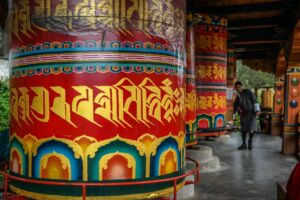
Inside the temple there is a 5m tall statue of Guru Rinpoche, and some incredible wood work. A unique statue within the temple is the Red Tara holding the bow. Be sure to check this out.
If you happen to be staying at one of the resorts/hotels nearby (which most tourists end up doing), then you can easily walk here in the early morning or late afternoon to hear the monks pray. It also will give you a valuable insight into how the monks wake up and preform their morning tasks.
Shopping for Antiques in Paro Town
Paro is a small town, but one thing it has many of is souvenir shops. Luckily for Bhutan, the shopping here is exquisite. China’s influence has not made it here with its cheap lifeless souvenirs. Instead, Bhutan has set up many “antique shops” along the main street in Paro.
While I was in Paro I bought a 150-year-old trumpet from one of the temples here in the Paro Valley. The trumpet came with a red sealed government stamp which allows you to take it out of the country. The trumpet is incredible! It has no welds, just interlocked metals.
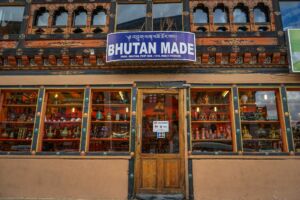
Other items of interest could be traditional Thangka paintings, instruments made from human bones, flags, conch shell trumpets, and various other antique items.
Prices are high, but so is the quality of the items. Check out the Bhutan Made shop where I bought my trumpet. Their selection was fantastic.
Paro Nightlife
Such a peaceful country based on farming and a Buddhist life might give you the impression that there is no night life here… well that thought would be wrong. When the sun sets, the neon lights turn on, calling in everyone to switch their traditional Gho for jeans, and tea to beer. This is a great chance to see the Bhutanese let their hair down!
A warning: the Bhutanese can drink, and drink a lot they can! Don’t try to drink them under the table, because they will most likely win.
The night life starts off with Karaoke, but not the kind you and I are used to. At Bhutanese Karaoke, “professional” singers wait on stage, calling on the audience for tips to initiate whatever song you want them to sing.
After Karaoke is when you head on down to the dance clubs. Usually underground and not signed, these places are a sight unto their own. They blast western music mixed with Bhutanese/Indian melodies, and the locals dress in western clothes. Its not too far off from a dance club in the west!
Taktsang Goemba
After getting a great feel of Paro Valley the previous day with my new friend Sonam, it was time to see the main sight in Paro, and the most well-known sight in Bhutan, Taktsang Goemba.
Waking up and leaving at 6 am gave us the upper hand, as we were trying to make it to Taktsang before any other tourists. We arrived at the trailhead by 6:30 and began the hike. The hike is 8.5 km roundtrip, and takes the average hiker 3-4 hours, including stopping to see the temple.
The first bit of the trail enters a misty forest. We walked past some giant prayer wheels that are powered by some small, bubbling streams. Shortly after this, the trail starts to have a steep grade as it climbs up the mountain. Sonam and I were both quite fast hikers. We climbed to the teahouse, which is the halfway point, in about 30 minutes.
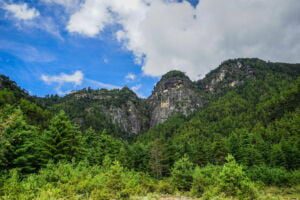
The teahouse is where you get your first look at Taktsang Goemba. As you sip on tea during the chilly hours of the morning, the misty clouds swirl around the gravity defying temple, high above in the mountains. Often, the temple is covered up, but if you wait long enough, it reveals itself like a water colored painting. It is truly beautiful.
Tea finished, we set off. The climb from here gets very steep. If you are a strong hiker it will only take 15-20 minutes to reach the next viewpoint, but most can take up to an hour with frequent breaks. When you finally reach the top, you walk to a platform which is famed for having had the Duke and Duchess of Cambridge take a selfie here. You can see why!
It is hard to peel yourself away from the view point considering from here you must go down a few hundred steps, and of course straight back up those few hundred steps on the opposite side of the valley.
When we finally arrived to Taktsang we were rewarded with being one of the few to make it this early in the morning. We could hear the monks chanting from the inner halls of this vast and mysterious temple. Upon entering, you must leaving your camera and bags with reception, as no photography is allowed inside the sacred site.
Sonam lead me through the different corridors of the temple. Many of the rooms still had monks chanting their morning prayers as juniper incense billowed out of the large ornate brass doors. Sonam explained the significance of why this temple is known as the “Tigers’ Nest.”
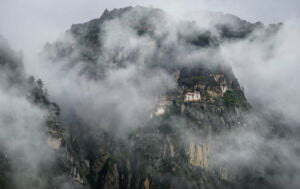
“Guru Rinpoche came here in the past to meditate. To get here, his wife turned into a flying tigress, which he rode to here. Now, when tigers fly they become like a bird, and birds nest. That is why the nickname “Tigers, Nest” stuck!” exclaimed Sonam.
We visited one of the portions of the temple where there is a small cave that is said to be where Guru Rinpoche meditated, and the chamber where his powerful dagger-like weapon is held.
Guru Rinpoche – Padmasambhava, also known as Guru Rinpoche, was a Buddhist master hailing from India. He is the most depicted figure within Bhutan and has had more impact than any others here. Most guides refer to him as “second Buddha,” as he is widely believed to be the reincarnation of Lord Buddha. He is easily recognized, just look for the curly moustache and piercing eyes!
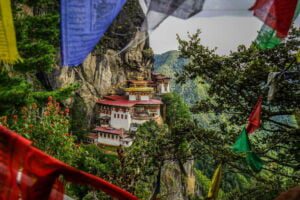
Heading back down from the temple takes significantly less time, but with the clouds clearing it is hard not to look back at this beautiful, and sacred place. As the morning mist was almost gone, the Tigers’ Nest loomed high above once again. This time, I could see it every step I went down the mountain. Here you can feel it: this place is special. It contains something that we can’t understand as simple travelers!
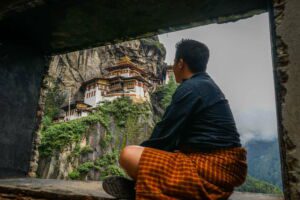
Travel Bhutan Video
Druk Asia
Bhutan is a unique destination to visit. One of these reasons why is because it is so remote. Entering Bhutan, you are required to be on a tour. Most travelers will not like the sound of this, but depending on the tour company, traveling here won’t feel like a “tour” at all. Druk Asia did everything for me to feel as if I was still traveling independently. Their tours offer a private car and guide for a similar price to a bus packed full of tourists. they are flexible and designed for those of us not looking for the regular “tour” experience. In my opinion, Druk Asia is the best company out there for anyone who is looking for a unique experience to Bhutan! Check out DRUK ASIA Here!
Useful information
Location: Paro Valley, Bhutan
Daily Costs: Bhutan has a daily tariff of 250 US per day which is all inclusive.
Tips: Start the trek to the Tigers Nest early to beat the crowds.
Recommended Guide: Lonely Planet Bhutan
Tour Company Used: DrukAsia


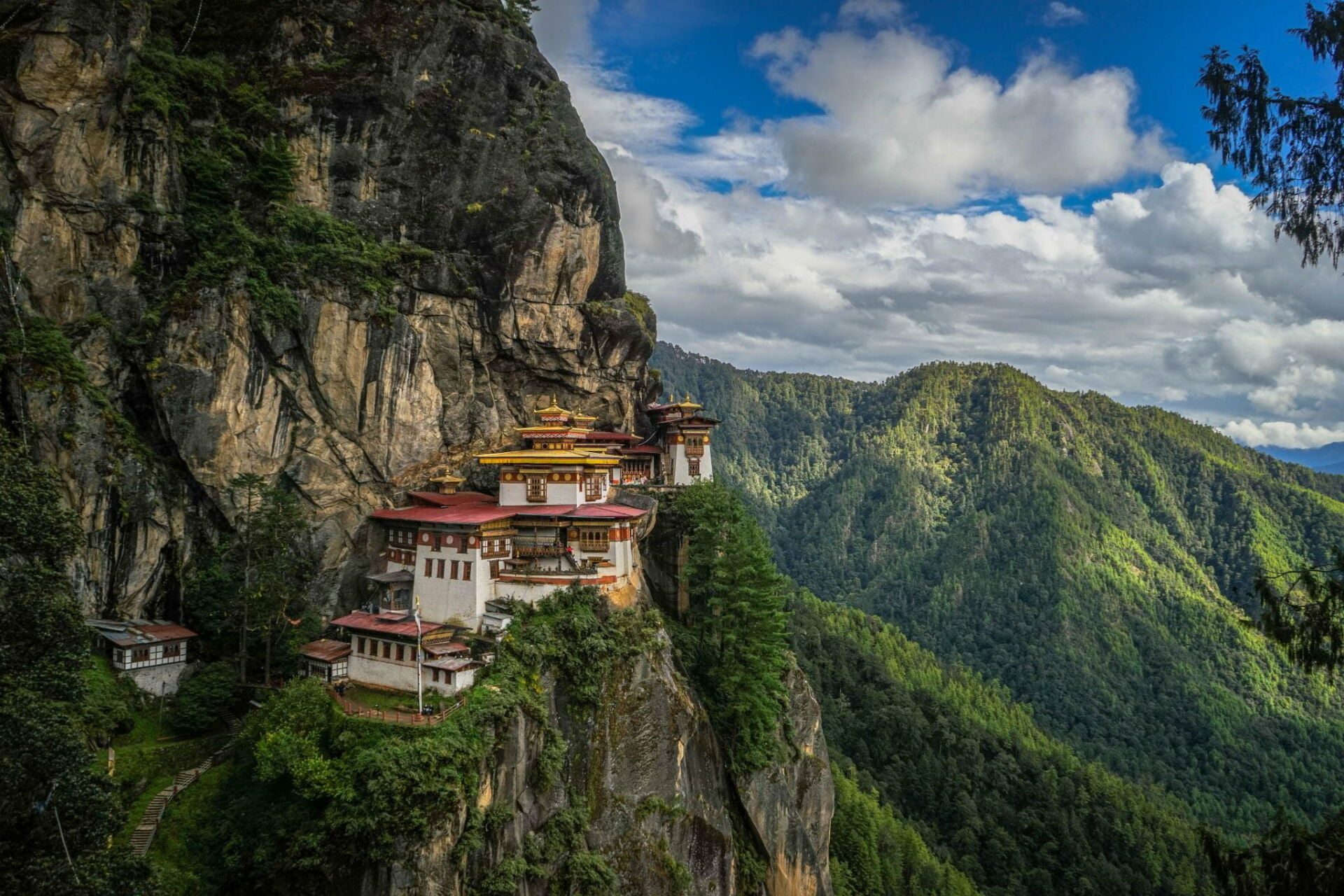
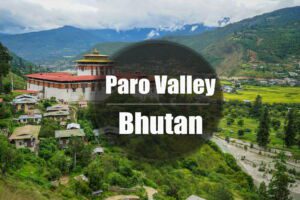
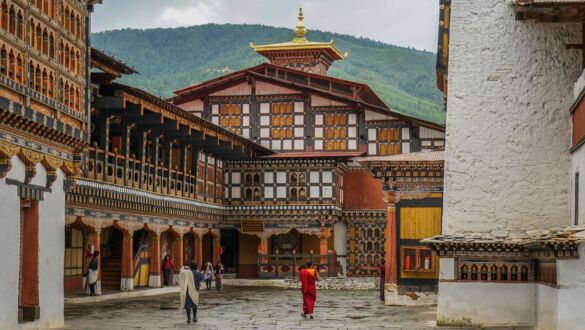
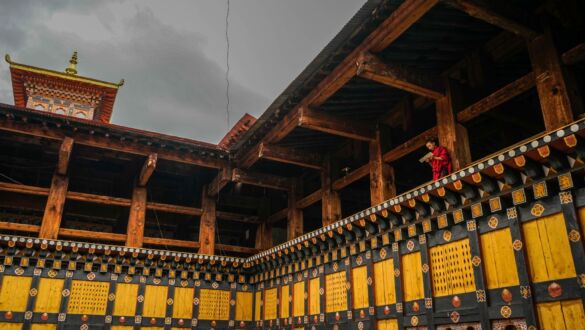

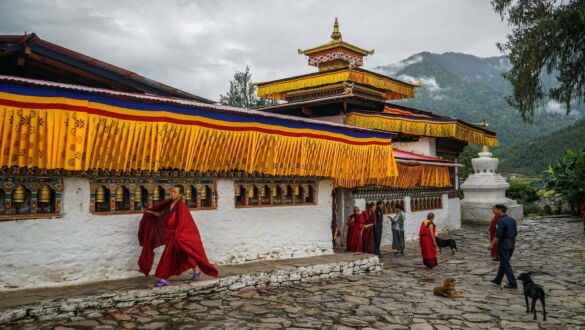

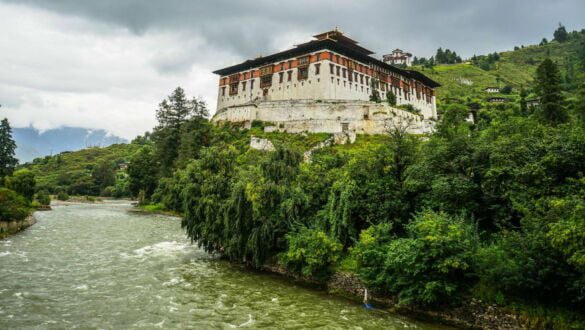
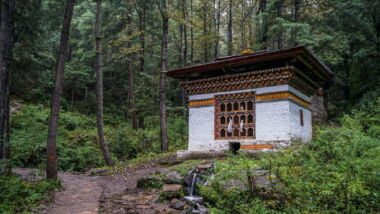
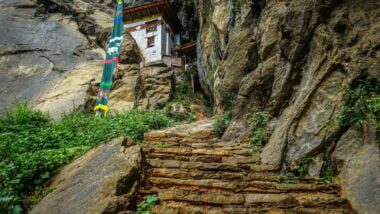
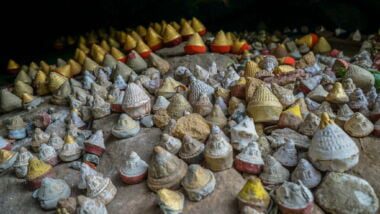
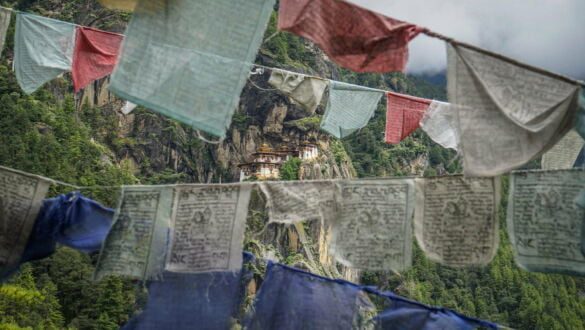
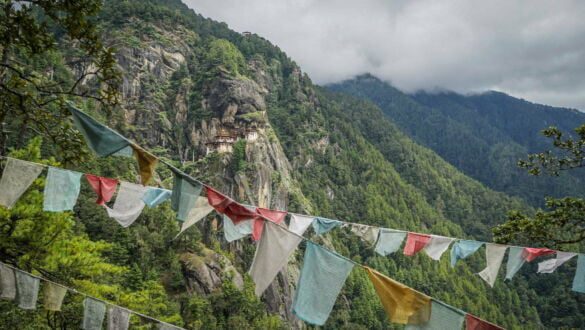
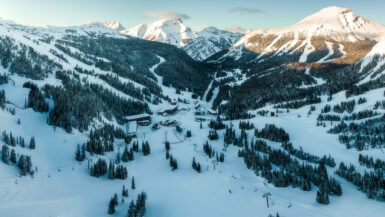
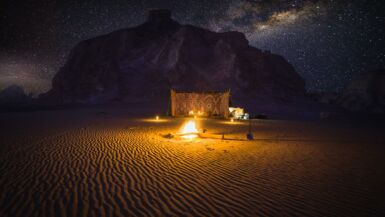
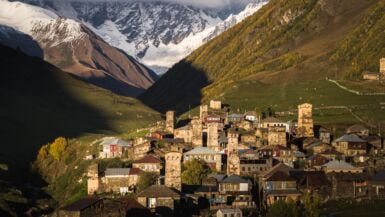
Leave a reply